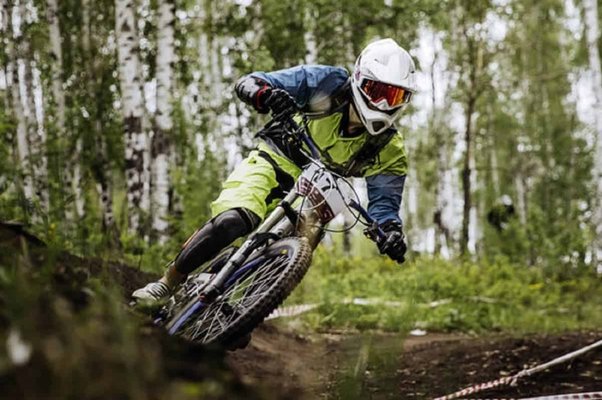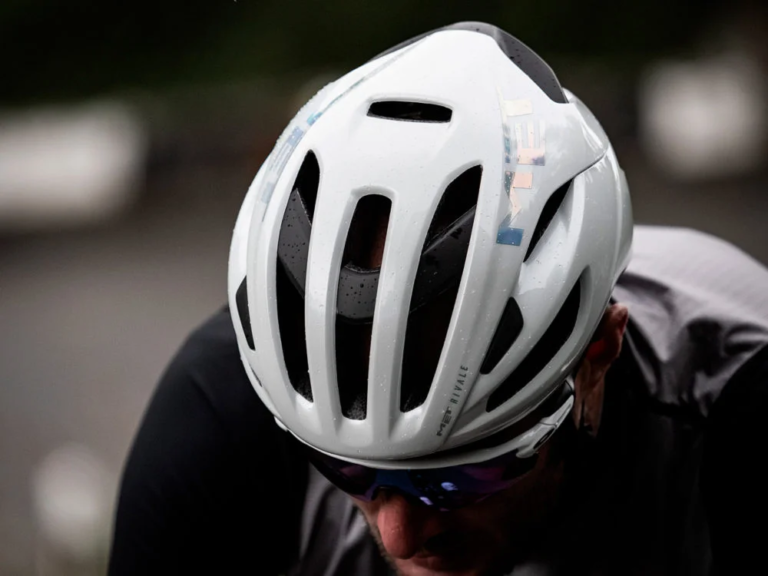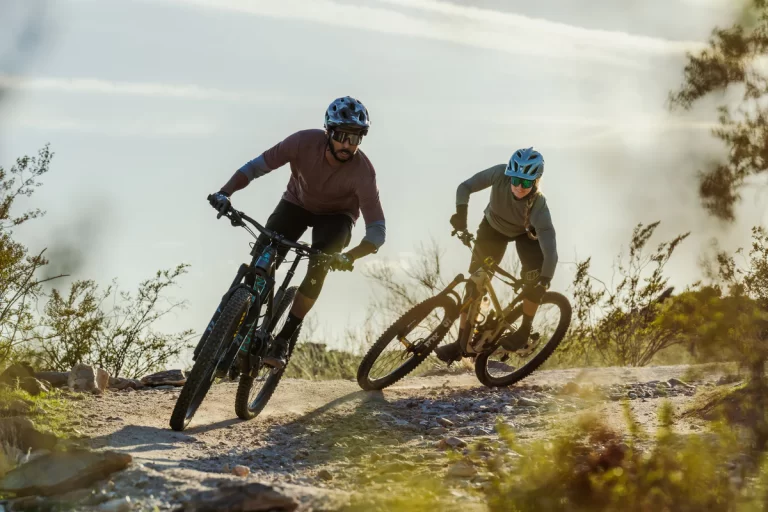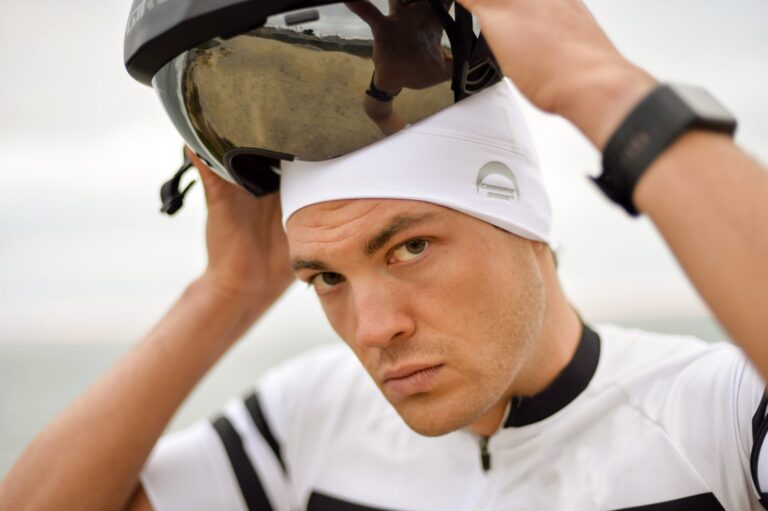Choosing A Full Face Mountain Bike Helmet: A Master Cyclist’s Guide to Safety, Comfort, and Performance

Key Point Summary of Choosing A Full Face Mountain Bike Helmet:
- Safety and Protection Features: Understanding the importance of full-face coverage, impact resistance, and helmet certification.
- Comfort and Fit: How to ensure a proper fit for maximum comfort and safety, including adjustment features.
- Ventilation and Weight: Balancing the need for airflow with the protection of a full-face helmet, and the impact of helmet weight on riding experience.
As a seasoned master cyclist with a diverse background in racing and riding mountain bikes, gravel bikes, cyclocross bikes, and more, I’ve learned a thing or two about the importance of choosing the right gear, especially when it comes to helmets. For those of you just starting out or with mid-level experience in mountain biking, selecting the right full-face mountain bike helmet can be a game-changer. Let me walk you through what I’ve learned and what you should consider.
Safety and Protection Features
The primary purpose of a full-face helmet is to offer comprehensive protection. Unlike standard helmets, full-face mountain bike helmets cover your entire face, including the jaw and chin area, which are particularly vulnerable in mountain biking crashes. One personal anecdote comes to mind: during a downhill race, I took a tumble and landed chin-first. Thanks to my full-face helmet, I walked away with just a few scratches, instead of a potential facial injury.
When shopping for helmets, look for impact resistance certifications like CPSC, ASTM, or EN. These certifications mean the helmet has undergone rigorous testing and meets specific safety standards. Also, consider helmets with MIPS (Multi-directional Impact Protection System), which provides added protection against rotational forces during a crash.
Comfort and Fit
A helmet is no good if it’s not worn correctly, and comfort plays a big role in this. A poorly fitting helmet can distract you and compromise safety. For the best fit, measure your head circumference and consult the manufacturer’s sizing chart. The helmet should sit snugly on your head without feeling too tight. Look for helmets with adjustable straps and internal padding that can be customized for a better fit.
Remember, a full-face helmet will feel different than a regular helmet. It took me a few rides to get used to the sensation of having my face covered, but the added sense of security was worth the initial discomfort.
Ventilation and Weight
Mountain biking is an intense sport, and it’s easy to work up a sweat. Good ventilation is crucial in a full-face helmet to keep you cool and comfortable. Look for helmets with multiple vents that allow for airflow without compromising the structural integrity of the helmet.
Weight is another important consideration. A heavy helmet can strain your neck and shoulders, impacting your riding experience. My first full-face helmet was on the heavier side, and I noticed a significant difference when I switched to a lighter model. It improved my comfort and endurance on longer rides.
Personal Experience and Recommendations
I recall a time when I was riding a technical trail with a beginner-level helmet. The lack of proper facial protection was a constant worry, especially in more challenging sections. After upgrading to a full-face helmet, not only did my confidence improve, but I also felt more willing to tackle difficult trails.
For beginners to mid-level riders, I recommend starting with a mid-range full-face mountain bike helmet. They offer a good balance of safety features, comfort, and affordability. As you gain more experience and understand your specific needs, you can invest in a higher-end model with advanced features.
Selecting the best brand for a full-face MTB helmet depends on various factors including safety features, comfort, fit, and budget. As of my last update, here are some of the top brands known for their quality full-face mountain bike helmets:
- Fox Racing: Renowned for high-quality helmets like the Proframe and Rampage, offering excellent protection and comfort.
- Troy Lee Designs: Famous for stylish, durable helmets. The D3 and Stage series are particularly noted for their comfort and safety features.
- Bell: A great mix of quality and affordability, with models like the Bell Super DH and Full-9 offering robust protection and innovative features.
- Giro: Known for lightweight yet protective helmets, such as the Switchblade and Disciple, offering good ventilation and comfort.
- POC: The Coron Air SPIN and similar models emphasize safety and innovative design, though they are on the pricier side.
- Smith: Smith helmets are well-regarded for their build quality and innovative technologies, especially in models like the Forefront and Session.
- Specialized: Specialized offers helmets like the Ambush and Dissident, known for their advanced safety features and ergonomic design.
- Kali Protectives: Known for their safety technology such as LDL and Nano Fusion in helmets like the Shiva 2.0, designed for maximum impact protection.
- Lazer: Lazer helmets, like the Revolution and Phoenix+, are recognized for their comfort, adjustability, and comprehensive protection features.
- MET: Their Parachute helmet, known for its lightweight design, provides comfort suitable for longer rides.
Each of these brands has its unique strengths. When choosing a full face mountain bike helmet, consider trying them on for fit, comfort, and the specific features that align with your riding style and conditions.
Here at Cyclists Authority, we have meticulously rated and ranked the Best Bike Helmets, specifically catering to the diverse needs of mountain biking. Our comprehensive reviews cover a range of helmets suitable for downhill, enduro, and cross-country (XC) biking, ensuring that every rider can find the perfect match for their style and terrain.
We understand that choosing the right helmet is crucial for your safety and enjoyment on the trails. That’s why we don’t just stop at ratings and rankings. For those times when you might second-guess the effectiveness of your current helmet, we offer valuable resources and guides on helmet maintenance and replacement. These resources are especially useful in understanding when it’s time to replace your helmet – whether it’s due to aging, wear and tear, or after a crash.
Should You Replace Your Bicycle Helmet After a Crash?
How Often Should you Replace your Bike Helmet?
Additionally, we delve into the critical signs of helmet wear that every cyclist should be aware of, and provide expert advice on how to properly assess helmet integrity. This includes checking for visible cracks, assessing the functionality of straps and buckles, and understanding the impact of UV exposure on helmet materials.
At Cyclists Authority, we also recognize the importance of staying up-to-date with the latest technology and safety standards in helmet design. Our guides include insights into the latest innovations in helmet safety, such as MIPS (Multi-directional Impact Protection System) and SPIN (Shearing Pad INside) technologies, which offer enhanced protection against rotational forces during impacts.
Moreover, we believe in empowering our community with knowledge. Alongside our helmet reviews and maintenance guides, we offer tips on how to achieve the perfect helmet fit. A well-fitting helmet is key to maximizing protection, comfort, and performance. We provide step-by-step instructions on how to adjust your helmet for the ideal fit, along with recommendations for different head shapes and sizes.
Whether you’re a seasoned pro or new to the world of mountain biking, our goal is to ensure that you have the right gear to ride with confidence and safety. Stay tuned to Cyclists Authority for the latest in helmet technology, safety tips, and expert advice tailored to the mountain biking community.
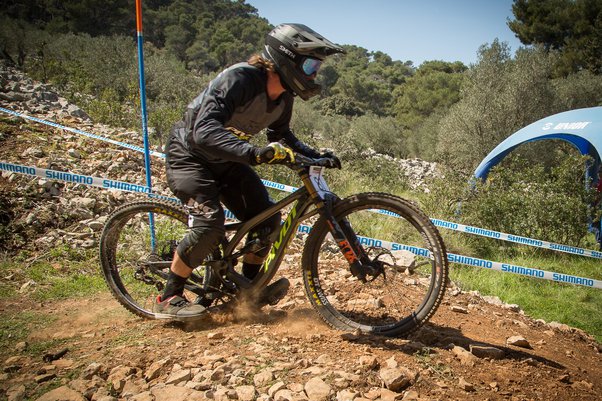
FAQ
What helmet should I wear for mountain biking?
For mountain biking, it’s crucial to wear a helmet that provides both comprehensive protection and comfort. The type of helmet best suited for you depends on the style of mountain biking you’re engaged in. Here are some general guidelines:
- Trail Riding: For general trail riding, a helmet with extended coverage at the back of the head and around the temples is recommended. These helmets offer more protection than standard road bike helmets. Look for features like adjustable visors, ample ventilation, and a secure fit system.
- Cross-Country (XC) Riding: XC riders typically prefer lightweight helmets with good ventilation, as this style of riding often involves long distances and climbing. While protection is important, the emphasis is more on comfort and less weight.
- Enduro Riding: Enduro riding involves both climbing and descending, so a helmet that offers a balance of protection, ventilation, and weight is ideal. Many enduro riders choose helmets with additional coverage and features like a removable chin bar for added protection during descents.
- Downhill (DH) Mountain Biking: For downhill or aggressive mountain biking, a full-face helmet is the best choice. Full-face helmets provide the most comprehensive protection, covering the entire head, face, and jaw. They are similar to motocross helmets but are lighter and better ventilated.
- All-Mountain Riding: This style is a mix of climbing and descending, so a helmet that offers extra protection without being as heavy or hot as a full-face helmet is ideal. Convertible helmets that can switch between full-face and open-face configurations are popular in this category.
Additionally, look for helmets that have safety certifications (like CPSC, EN 1078, or ASTM F1952). Features like MIPS (Multi-directional Impact Protection System) or similar technologies that offer additional protection against rotational forces during an impact are also beneficial.
Do I really need a mountain bike helmet?
Yes! Wearing a mountain bike helmet is essential for several compelling reasons:
- Safety: First and foremost, a helmet is a critical safety device. Mountain biking involves navigating rough terrain, which increases the risk of falls and collisions. A helmet can significantly reduce the risk of serious head injuries. Research has consistently shown that helmets effectively prevent or lessen the severity of head trauma in the event of an accident.
- Terrain-Specific Features: Mountain bike helmets are designed with the specific challenges of off-road cycling in mind. They typically offer more coverage and protection, especially at the back of the head, than standard road bike helmets. This design aspect is crucial for mountain biking, where falls can be unpredictable and the impact points are more varied.
- Legal and Trail Requirements: In many places, wearing a helmet is legally required while cycling, including mountain biking. Additionally, many organized trails and parks mandate helmets for riders for insurance and liability reasons.
- Setting a Positive Example: Wearing a helmet also sets a positive example for others, particularly for younger or less experienced riders. It promotes a culture of safety in the mountain biking community.
- Advancements in Comfort and Technology: Modern mountain bike helmets are equipped with advanced technologies like MIPS (Multi-directional Impact Protection System) and better ventilation systems, making them more comfortable to wear even on long rides. This increased comfort means there’s little downside to wearing one.
- Personal Assurance and Confidence: Knowing you are better protected can instill greater confidence when riding, especially on challenging trails. This can enhance your overall riding experience, allowing you to focus more on enjoying the ride and less on the risks.
In summary, wearing a mountain bike helmet is a small but critical step you can take to protect yourself. It’s an investment in your safety and well-being, and given the unpredictable nature of mountain biking, it’s an essential piece of gear for every ride.
What is the best mountain bike helmet to prevent concussions?
When looking for a mountain bike helmet that offers the best protection against concussions, it’s important to consider helmets that incorporate the latest safety technologies designed to reduce the risk of brain injuries. While no helmet can guarantee complete prevention of concussions, some features significantly improve safety:
- MIPS (Multi-directional Impact Protection System): MIPS is a helmet technology designed to reduce rotational forces that can result from certain impacts. It allows the helmet to slide relative to the head, adding more protection against rotational motion to the brain caused by angled impacts.
- WaveCel/SPIN Technology: Similar to MIPS, technologies like Bontrager’s WaveCel and POC’s SPIN (Shearing Pads Inside) are designed to absorb energy and reduce the force transmitted to the brain during an impact, thus lowering the risk of concussion.
- Dual-Density Foam: Helmets with dual-density foam have layers of foam with different densities, allowing them to absorb impact forces more effectively.
- Extended Head Coverage: Mountain bike helmets with extended coverage in the rear and sides provide better protection for areas of the head that are more susceptible to injury in mountain biking crashes.
- Proper Fit: A helmet must fit properly to be effective. Make sure to choose a helmet that fits snugly and stays securely in place on your head.
- Certifications: Look for helmets that meet safety standards such as CPSC, CE EN1078, and ASTM F1952 for downhill mountain biking. These certifications ensure that the helmet has passed tests for impact absorption.
Conclusion
Choosing a full face mountain bike helmet is about balancing safety, comfort, and performance. Consider the safety features, ensure a proper fit, and don’t underestimate the importance of ventilation and weight. While these helmets offer advanced protection, the best helmet is one that fits you well and is suitable for the type of riding you do. Always ensure a proper fit and replace any helmet that has been involved in a crash, as its integrity may be compromised.
A helmet is your most important piece of safety equipment, so choose wisely.
Stay safe, and enjoy the ride!
John
